People will always be fascinated with auctions of any kind. The passion for collecting and restoring antiques and other valuable goods is gaining in popularity as people’s interest in vintage items over new continues to increase. However, in terms of collectables, one man’s meat might be another man’s poison and a recent news story about an upcoming auction might just be about to further put this theory to the test. Read more
Guest Blogs
Kate Manko at The George Marshall Store Gallery
 I am an east coast gal. I was born in Portsmouth, New Hampshire and raised in Wells, Maine. I visit York, Maine often, it has always been one of my favorite places because it is part of the route ‘home.’ When I think of why I love the coast of Maine, York is always one of the reasons.
I am an east coast gal. I was born in Portsmouth, New Hampshire and raised in Wells, Maine. I visit York, Maine often, it has always been one of my favorite places because it is part of the route ‘home.’ When I think of why I love the coast of Maine, York is always one of the reasons. 
Recently the George Marshall Store Gallery contacted our business to be apart of the exhibit Accord VIII: A Pairing of Antiquities and Contemporary Art. Up until this point I had never visited the gallery, only heard great things about it. Before working with the museum I went to the site and was amazed. I had no idea the amount of history that existed on this very piece of property. The museum is truly a gem. The seaside setting is the icing on the cake. To smell fresh salty air while looking at art and antiques is what the tourists dream of and the ‘Maine-rs’ sometimes take for granted. Read more
Really Digging Bottles
 by Bram Hepburn
by Bram Hepburn
Many advanced collectors of early American glass bottles will tell you the category they first started collecting was ink bottles. Their diminutive size and alluring colors and shapes catch the eye of anyone with an appreciation for detail and a fascination with the early glass-blowing trade as it developed on this continent.
For a beginning collector, or an interior decorator in search of vintage accents for old cupboards and desks, a 120-year-old ink bottle will often fit the bill and is very affordable. For a few dollars, you have an authentic glass container that was used every day by someone with a quill pen, sitting at a desk, filling out bills or invoices, or carefully writing a letter by hand in cursive (which is becoming a lost art).
I have been a bottle “digger” in New England for 30-plus years, digging in the forest, in foundations, in old outhouse pits and even under water with the help of SCUBA equipment. If I didn’t have other responsibilities, this is probably all I would do; it is simply that much fun. Compulsive bottle hunting doesn’t lend well to raising a family and paying bills, however, as the following story attests:
The Ikea Generation…Lack of Sophisticated Collectors
by Ron Lawson
It seems almost everywhere you turn these days you do not have to go very far to notice a molded, pressed particle or stapled
flat pack piece of furniture, perhaps even in your own home. Certainly, It’s low cost appeal is foremost these days and it could be argued that it lasts several years.
 Indeed, by design that was it’s very role, Ikea was founded in 1943 by 17-year-old Ingvar Kamprad in Sweden In response to the explosion of human population and material expectations in the 20th and 21st century, the company implementing economies of scale, capturing material streams and creating manufacturing processes that hold costs and resource use down, such as the extensive use of particle board. The intended result is flexible, adaptable home furnishings, scalable both to smaller homes and dwellings as well as many larger houses. The products, widely once thought of as merely college age or dorm furniture designed to last through those years, has now become the staple for many of us.
Indeed, by design that was it’s very role, Ikea was founded in 1943 by 17-year-old Ingvar Kamprad in Sweden In response to the explosion of human population and material expectations in the 20th and 21st century, the company implementing economies of scale, capturing material streams and creating manufacturing processes that hold costs and resource use down, such as the extensive use of particle board. The intended result is flexible, adaptable home furnishings, scalable both to smaller homes and dwellings as well as many larger houses. The products, widely once thought of as merely college age or dorm furniture designed to last through those years, has now become the staple for many of us.
Odd ideology when placed in comparison with the growing green movement and pertaining to the global saving of the environment.
 These days, as with our widely disposable use of many items, quality is secondary to use and items are simply made to be discarded as and used only when needed. This begging the question, is it quality down the drain or is it baby and bath water out the window? What I fancy calling “The Ikea mentality”.
These days, as with our widely disposable use of many items, quality is secondary to use and items are simply made to be discarded as and used only when needed. This begging the question, is it quality down the drain or is it baby and bath water out the window? What I fancy calling “The Ikea mentality”.
One of the side affects to this mentality certainly is the growing lost appreciation for actual quality and craftsmanship. People seem far less interested these days with whether a piece of furniture is antique, hand made, carved or of what wood than whether it will biodegrade or simply hold a playstation or just simply accent the new 3D plasma television.
This is by no means limited to furniture, but probably is an example the most readily noticed. I would question if there are very many 20-40 something’s out there with an eye towards ever collecting furnishings by Belter, Herter or Stickley & and of those how many are ever likely to be exploring classic period–Baroque, Nouveau or other pieces…even in the style.
I unfortunately see a day when other fine antiques such as that of Tiffany, Meissen, Daum, Lalique etc., are looked on as merely odd old trinkets in lieu of the local Target chrome plated centerpiece or faux resin bronze.
 While not being an elitist by any stretch of the imagination, I have witnessed a constant and steady decline in the appreciation of antiques in general. Not just as a response to the present economy but also the fact that true style in general has declined over the last 40 years to such a degree that everything produced currently (with some exceptions) is now marginal. Here today and gone tomorrow so to speak, not intended to last generation to generation. Heirloom quality now, represents merely a descriptive marketing term most often associated with such firms as the Franklin and Danbury Mint.
While not being an elitist by any stretch of the imagination, I have witnessed a constant and steady decline in the appreciation of antiques in general. Not just as a response to the present economy but also the fact that true style in general has declined over the last 40 years to such a degree that everything produced currently (with some exceptions) is now marginal. Here today and gone tomorrow so to speak, not intended to last generation to generation. Heirloom quality now, represents merely a descriptive marketing term most often associated with such firms as the Franklin and Danbury Mint.
Part of the love of antiques, is the appreciation of craftsmanship, it’s style and for myself…a preservation of history. The history that an item has survived and in some ways lives to speak to that time, an era or even a singular person. It evokes something deep within, as all antiques can and should. That the item will someday hopefully out last us and in some odd and perhaps romanticized fashion, we might impart a small bit of ourselves back into it. By understanding and caring for antiques, we in fact care for something, a memory far longer then the original owner could…but if able, would.
IF there is a continued loss of this appreciation, who will or could continue to preserve it?
How many of us take the time to simply spend a moment with our own friends or family and explain why an antique has meaning? For example, why grandmothers Chippendale desk is special (or at least special too you), why that Baroque inlaid bureau has such a design to it. Or, for that matter, why you still wear your late fathers vintage watch.
There is an enormous amount of passion to be found in antiques, whether you collect or sell them and there is also a responsibility to preserve and help perpetuate that same passion.
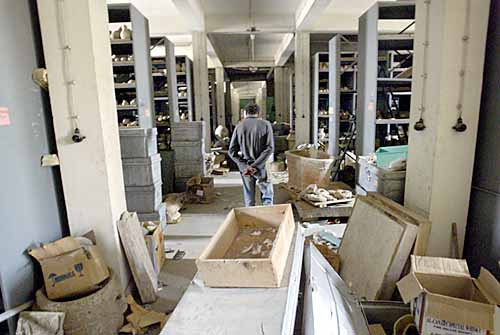
Trafficking of Cultural Property, Antiques, Art & Antiquities
by Median1
There has always been a illicit market for looted and stolen antiques and history.
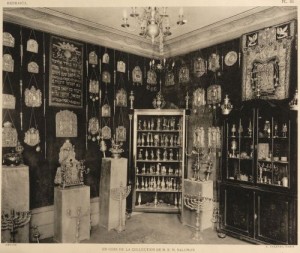 New York-based Conference of Jewish Material Claims Against Germany and the United States Holocaust Memorial Museum in Washington, D.C. recently released a joint press statement estimating that some 650,000 or more objects of art were believed looted by both the Nazi’s, the U.S. and allies from various museums and private collections throughout Europe. “Most people think or thought that most of these items were repatriated or restituted,” said Wesley A. Fisher, director of research at the Claims Conference. “It isn’t true. Over half of them were never repatriated.
New York-based Conference of Jewish Material Claims Against Germany and the United States Holocaust Memorial Museum in Washington, D.C. recently released a joint press statement estimating that some 650,000 or more objects of art were believed looted by both the Nazi’s, the U.S. and allies from various museums and private collections throughout Europe. “Most people think or thought that most of these items were repatriated or restituted,” said Wesley A. Fisher, director of research at the Claims Conference. “It isn’t true. Over half of them were never repatriated.
That in itself is rather interesting historically speaking, however it only speaks to what obviously is merely a very small fraction of the items looted worldwide, a purported 6 billion dollar industry in just the last year.
Museums, dealers, collectors and auctioneers alike have long been aware of the underground black marketing of stolen and looted items. Traditionally wealthy collectors who were willing to pay a premium for unusual & rare pieces were blamed for the black market in stolen goods. Private treasures of the respected elite, to be hoarded, locked away and carefully guarded…for their eyes alone.Yet, in truth the modern looter, unscrupulous dealer and collector can no longer easily be categorized so simply. Shadowy dealing in dark alley ways is a thing of the past…In fact, archaeological theft apparently has gone corporate.
 Here in America alone looters have long pilfered Native American sites in search of pottery, bones, jewelry, arrowheads and even carved pictographs. Newsweek recently stated that many archeologists when polled estimate currently that as high as 80 percent of former tribal lands have now been plundered in just the last decade. (Newsweek, Tony Dokupil July 19, 2010). In an era where an ancient sacred funeral pit can be simply dug up, pilfered and items sold for as high as fifty to sixty thousand dollars on the black market the temptation to loot a site, without regard is becoming unfortunately, common place.
Here in America alone looters have long pilfered Native American sites in search of pottery, bones, jewelry, arrowheads and even carved pictographs. Newsweek recently stated that many archeologists when polled estimate currently that as high as 80 percent of former tribal lands have now been plundered in just the last decade. (Newsweek, Tony Dokupil July 19, 2010). In an era where an ancient sacred funeral pit can be simply dug up, pilfered and items sold for as high as fifty to sixty thousand dollars on the black market the temptation to loot a site, without regard is becoming unfortunately, common place.
Rarely do these Native thefts make news, for several reasons. Embarrassment is certainly one, tribal restitution another and certainly the exposure of the site. One of the recent few stories regarding this being in June were some two dozen people were indicted after a sweeping undercover investigation into ancient artifacts stolen from public and tribal lands in the Four Corners area.”According to the associated Press., there were around 300 federal agents that were involved in the arrest of both men and women ranging from ages twenty-seven to seventy-eight. They were all part of an underground network. (Associated Press, Mike Stark, June 11, 2009)
The problem has seen looters even paying rent on private property in order to dig without being caught. Unfortunately there is no law to prevent digging on private property.
The Las Vegas Sun Newspaper reported recently concerning a couple of men who were questioned and detained concerning the loading of artifacts into a car. An observant ranger witnessed what they were doing leading to the recovery of more than 11,000 relics.
Another recent recovery was in February when a man was briefly held and an ancient pre-columbian figure seized at the Oakland Airport. The item recently returned to the Mexican government, which made news.The passenger claimed he found the artifact in Ameca, a rural city in the state of Jalisco in western Mexico, but there were some “inconsistencies” in his story, U.S. Customs and Border Protection spokeswoman JoAnn Winks said.
 She further went on to say that the man was not detained but agreed simply to sign a form relinquishing property rights to the item. Sure. And there it is…Inherently, that is the problem…large profit and a mere slap on the wrist…if your caught.
She further went on to say that the man was not detained but agreed simply to sign a form relinquishing property rights to the item. Sure. And there it is…Inherently, that is the problem…large profit and a mere slap on the wrist…if your caught.
As mentioned previously, globaly, it has been estimated as high as 6 billion dollars annually trades hands in the illicit trafficking and dealing of illegal artifacts. That figure does not even factor into consideration the above mentioned stolen art, found relics , or those that were stolen and now on the market from previous years . That is an absolutely staggering figure!
In its 2005 publication, the National Crime Record Bureau (NCRB) went so far as to officially state that of the mere 1,012 reported theft cases; only 326 stolen antiques were recovered. Strangely enough, again, apparently when thefts do occur of antiquities they rarely are reported.
For example: the Archaeological Survey of India (ASI) which is responsible for archaeological studies and the preservation of archaeological heritage of the country in accordance with the various acts of the Indian Parliament. According to its website, the ASI’s function is to “explore, excavate, conserve, preserve and protect the monuments and sites of National & International Importance.” The ASI provided data for only 13 thefts from inside Centrally-protected monuments during 2004-2006. The difference in data between the NCRB and the ASI certainly strongly suggests that not only is no protocol being regularly followed for registering of art thefts but further that no interagency cooperation exists.
Of the many artifacts & items stolen yearly, most will eventually find their way onto the conventional antiques market…including auction houses and online internet sites.
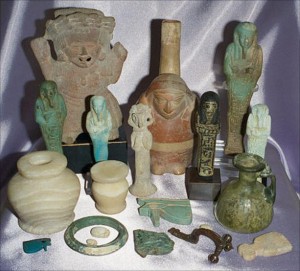 Recently the former director of a Long Island museum was convicted of stealing Egyptian artifacts from the institution’s collection of which were later sold through Christie’s. Among those items furnished to Christie’s was a bronze
Recently the former director of a Long Island museum was convicted of stealing Egyptian artifacts from the institution’s collection of which were later sold through Christie’s. Among those items furnished to Christie’s was a bronze
statuette depicting Apis believed to have dated 712 to 332 B.C. http://www.nypost.com/p/news/local/li_m … z13BuwWl00
With an ever expanding web presence, one has nothing more to do these days then go to ebay where some 300,000+ purported antiques, documents & antiquities flow freely weekly. Certainly of those listed online that are authentic, some experts claim 30% or higher are easily estimated at being illegally obtained. Ebay’s reaction to the problem was this release “The sale of stolen property is strictly forbidden on eBay” followed by this description…”Stolen property includes items taken from private individuals, as well as property taken without authorisation [sic] from companies or governments. ![]()
Obviously, ebay cared so greatly as to not even bother to proof their own formal press release. If that were not so appallingly pathetic a statement of fact, it would be simply humerousus [sic].
For those dealers/collectors that are not already aware of stolen art and related online data bases, here are a few sites that may hopefully help prevent the accidental marketing or purchasing of such items (including Nazi plundered art and antiques).
If any other members have links to add, please do feel free.
http://www.interpol.int/Public/WorkOfArt/Default.asp
http://www.museum-security.org/
Holocaust survivors and their relatives, as well as art collectors and museums, can now go online to search a free historical database of more than 20,000 art objects stolen in Germany-occupied France and Belgium from 1940 to 1944, including paintings by Claude Monet and Marc Chagall.
Database of Art Objects at the Jeu de Paume: http://www.errproject. org/jeudepaume http://www.worldjewishcongress.org/en/news/9624
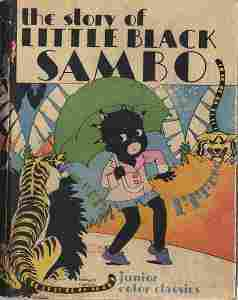
Denying History…Taboo Antiques & Collectibles in a Steadily Growing PC World
by Ron Lawson
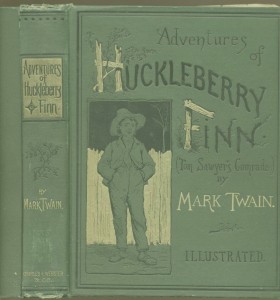 Recently, I was given Mark Twain’s autobiography which was followed that same week by the news that a newly-released version of “The Adventures of Huckleberry Finn” will substitute the word “slave” for the original N-WORD. All of which lead me to an early recollection…and as is my nature…a debate.
Recently, I was given Mark Twain’s autobiography which was followed that same week by the news that a newly-released version of “The Adventures of Huckleberry Finn” will substitute the word “slave” for the original N-WORD. All of which lead me to an early recollection…and as is my nature…a debate.
I was raised in the Southwest within a reasonably good, religious, upstanding & moral family. A family that prided itself on its kindness, generosity and understanding. While not being a Leave it to Beaver home, it is what some would consider a fairly typical middle class American upbringing.
My grandparents had a large home with a library, my grandfather a physician who maintained an extensive collection of medical books going back to the Civil War, my grandmother being deeply religious with an extensive collection of innumerable gospels and related books.
I can remember being about 6 years old one day while skimming books in the library and finding a small, somewhat out of place little book wedged between an odd John & Peter or Syphilis book. It was an old children’s book (obviously far out of it’s element) so I picked it up. It was about a small boy named Sambo.
For those too young to recall the book, it finds a young Tamal boy who encounters four hungry tigers, and must surrender his bright new clothes, shoes, and his umbrella so the tigers will not eat him up. The tigers proceed to chase each other around a tree until they are all reduced to a mere pool of melted butter (okay, “War & Peace” it is not).
The book, published in 1899 by Helen Bannerman, was titled “Little Black Sambo”. The boy eventually recovers his clothes and his mother makes pancakes of the butter. The story was a children’s favorite for over half a century until the word Sambo was deemed a racial slur by many, the illustrations considered stereotypical, this after Langston Hughes criticized the book as depicting a “pickaninny” which was considered hurtful to black children, and gradually the book disappeared and was banned from lists of recommended stories for children. The book still on several banned books lists.
At the time I read the book “Little Black Sambo” I obviously had no comprehension of the controversial nature or collectibles that would latter be coined as Racial, Black Americana or Jim Crow Memorabilia. It did not bear on my mind or corrupt my soul, however it apparently embarrassed my grand parents who promptly snatched it away and hid the small cloth bound book.
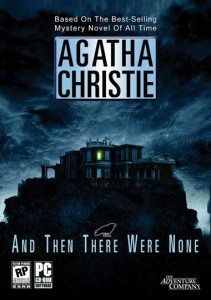 There had been other previously written racially related taboo books, yes…such as 1939’s Agatha Christie mystery novel originally titled “Ten Little N-WORD”. Okay…yes, (let’s get it over with) the dreaded “N-WORD”….you should by now however be very familiar with it’s commonly applied Politically Correct use.
There had been other previously written racially related taboo books, yes…such as 1939’s Agatha Christie mystery novel originally titled “Ten Little N-WORD”. Okay…yes, (let’s get it over with) the dreaded “N-WORD”….you should by now however be very familiar with it’s commonly applied Politically Correct use.
The title Ten Little N*****s was promptly changed because of the last word of the title obviously being a derogatory term for a black person, and in the United States by Dodd, Mead and Company in January 1940 was re-released under the title “And Then There Were None”. In the novel, ten people, who have previously been complicit in the deaths of others but have escaped notice or punishment, are tricked into coming onto an island. Even though the guests are the only people on the island, they are all mysteriously murdered one by one, in a manner paralleling, inexorably and sometimes grotesquely, the old nursery rhyme, “Ten Little Indians”.
It is Christie’s best-selling novel with 100 million sales to date, making it the world’s best-selling mystery ever, and one of the most-printed books of all time (Publications International lists it as 7th most-printed). It has since been adapted into several plays, films, and even a video game. Ref. Wikipedia®
In 1996, illustrator Fred Marcellino produced a re-illustrated version, The Story of Little Babaji, which changed the characters’ names but otherwise left the text unmodified. This version interestingly also became a best-seller.
Outside of books, numerous items such as slave collars, shackles, sale tags, sale/ownership documents, cast iron banks, cookie jars, advertising, photography and innumerable other items can and often do evoke a very powerful experience of the great extent to which such racist items permeated white society. Just about anything imaginable was mass produced, often embellished with a wide eyed black face having exaggerated features, or a catering overweight woman wearing a head scarf.
 Example: Many of us are familiar with the classic cast iron mechanical bank depicting the stereotypical black gentleman raising his hand to his mouth. The oft and ill titled “Jolly N-WORD” or the “N-WORD Hair Tobacco” tins or the many Aunt Jamima collectibles.
Example: Many of us are familiar with the classic cast iron mechanical bank depicting the stereotypical black gentleman raising his hand to his mouth. The oft and ill titled “Jolly N-WORD” or the “N-WORD Hair Tobacco” tins or the many Aunt Jamima collectibles.
That being said, most collectors of black Americana are in fact African-American. Most notably recognized celebrities such as Bill Cosby, Whoopi Goldberg and Oprah Winfrey, have all stated that they draw strength from such items because the antiques are symbolic of the struggles of their ancestors. It’s necessary to see that and to know we were once that kind of society.
So, that begs the question…if it is appropriate to not deny the history of an item (regardless of the obvious emotional affect), is it then not appropriate to use the correct title of that item? What is allowable and by whom?
Certainly, merely changing a title or calling an item by another name does not take away from what it is or that era’s use of such stereotypes. It is what it is…bit’s of our history and regardless of the amount of modifying it, can or should it ever be so easily disarmed and changed?
Who’s allowed to propagate or use these terms in regard to collectibles, when therefor is it acceptable or inappropriate? Do you or should you have to be of a certain demographic or race to use the correct title?
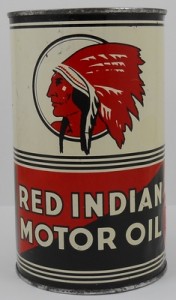 Native Americans have equally & as long been negatively depicted and associated with such products & items of a derogatory nature. There oddly however is a hubris to the sensitivity, a lack of refrain. Such items as cigar store Indians, squaw items, mannequins and products with such names as “Red Indian Oil”, “Running Indian” “Savage Arms”, “Red Man Tobacco” many of these items are still freely marketed including those for more then one sports team.
Native Americans have equally & as long been negatively depicted and associated with such products & items of a derogatory nature. There oddly however is a hubris to the sensitivity, a lack of refrain. Such items as cigar store Indians, squaw items, mannequins and products with such names as “Red Indian Oil”, “Running Indian” “Savage Arms”, “Red Man Tobacco” many of these items are still freely marketed including those for more then one sports team.
WWII items…A French judge back in 2001 ordered Yahoo to block French users from seeing listings of Nazi merchandise on its auction pages and said he would fine the company 13,000 (£9,000) each day it failed to comply. (Associated Press May 2001)
Does that make an item less relevant, sought out or historically unimportant?
No. The divide between each of us regarding these relics can be dramatic and certainly emotionally heated. This article does not presume to give advice on appropriateness or lack thereof. I have profound compassion of those feelings which these items do evoke. There is however a certain blindness, an inequity and yes even ambiguity prevalent in our society. The suppression of an item does not mean it does not exist, no more then the myth of an ostrich burying it’s head in the sand will prevent it’s being attacked.
As with any collectible, racial and military items all have and impart something that recalls a moment in time, a place or even tragic events. It is our history, we as a people created it and regardless of how ugly some of that history may be, it cannot be denied or devoid of it.